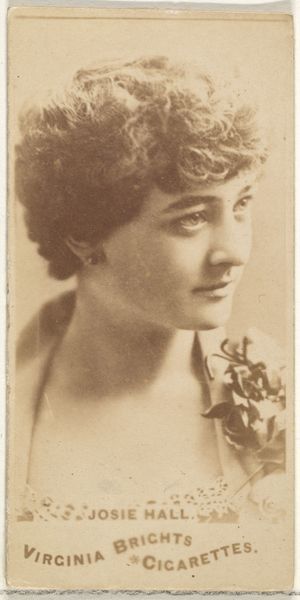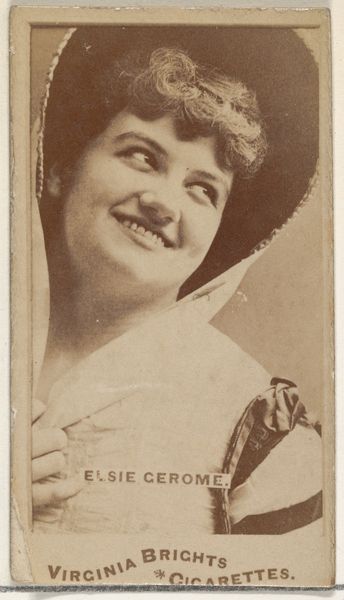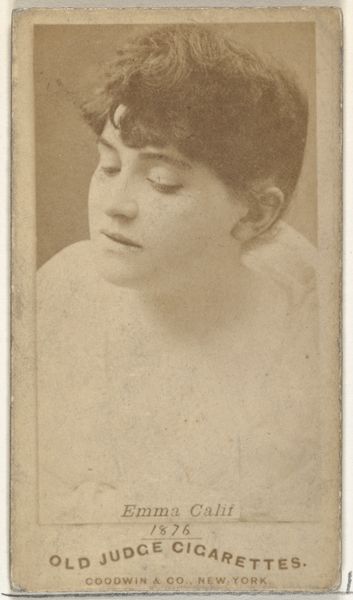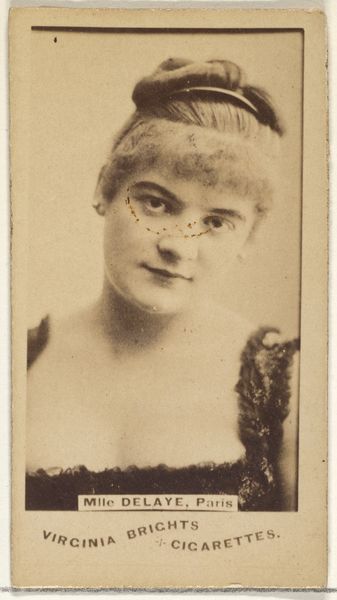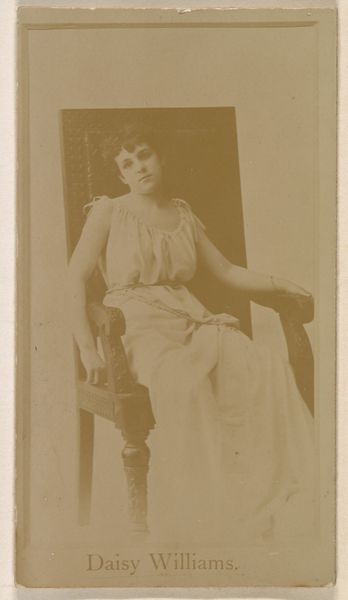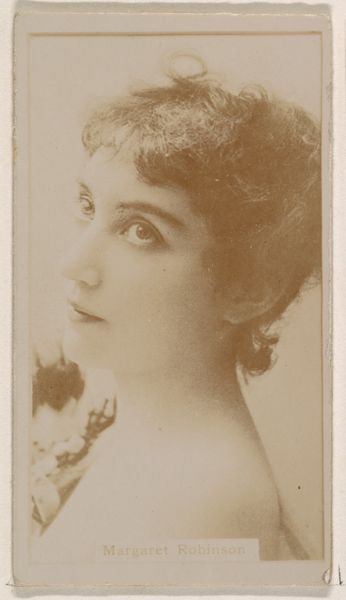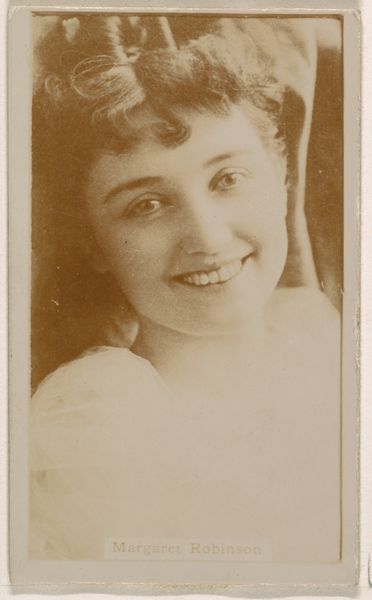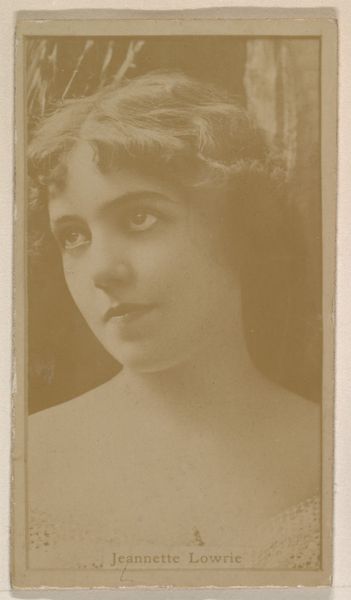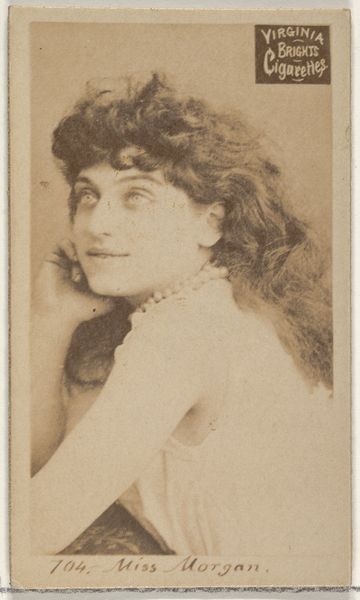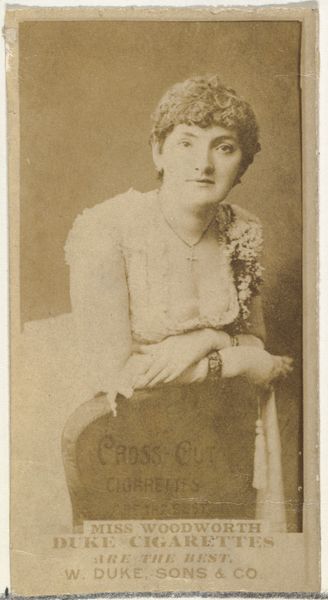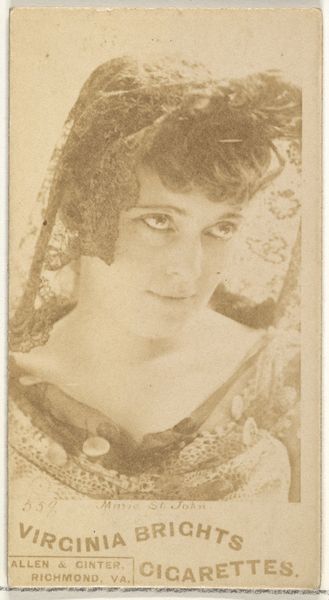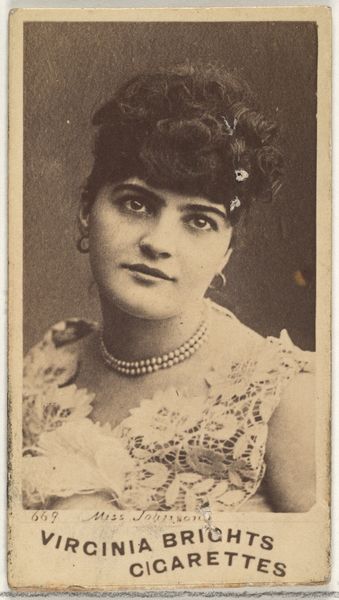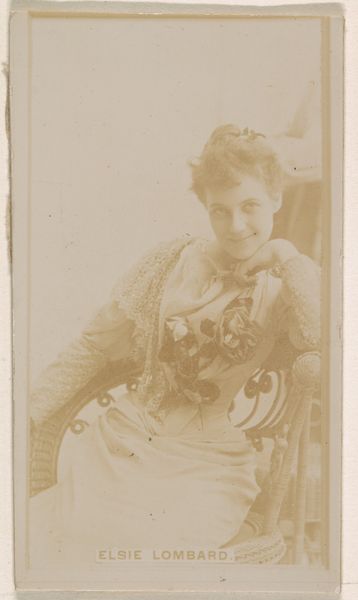
photography, gelatin-silver-print
#
portrait
#
pictorialism
#
portrait
#
photography
#
gelatin-silver-print
#
modernism
Dimensions: image: 24.3 × 19.4 cm (9 9/16 × 7 5/8 in.) sheet: 25.3 × 20.1 cm (9 15/16 × 7 15/16 in.) mount: 55.9 × 45.1 cm (22 × 17 3/4 in.)
Copyright: National Gallery of Art: CC0 1.0
Editor: Here we have Alfred Stieglitz's gelatin silver print, *Dorothy True*, created in 1919. I'm immediately struck by the warmth of the tone, it gives it such an intimate feel. What stands out to you in this image? Curator: Well, beyond the immediate aesthetic impression, I see a very deliberate use of materials. Stieglitz, at this time, was intensely interested in the photographic process itself, using it not just to record, but to create something akin to a hand-worked object. Editor: So, you're saying the materiality of the print itself is a key element? Curator: Precisely. Consider the gelatin silver process. It wasn't just about producing a sharp image; it was about controlling the tonal range and surface quality. The labor involved in each print would have been considerable. Stieglitz used photography as an art to prove it wasn't just about capturing an image, but about the craft of creation. Does that add a dimension for you? Editor: Absolutely. I hadn’t considered the intensive labour involved in what appears like such an effortless portrait. Did this level of craft influence consumption? Curator: Yes, the deliberate crafting elevated the perceived value. Stieglitz consciously positioned his photographs as luxury goods, resisting mass production in favour of hand-crafted objects. This transformed the way photography was perceived, consumed, and valued. How has this materialist approach affected your reading? Editor: It makes me see it as less a spontaneous moment and more of a crafted object, raising questions about labour and value in photographic art. I'll definitely consider this when looking at other photographic portraits. Curator: Exactly, questioning perceived worth allows us to look beyond subject and form, opening new and meaningful interpretations.
Comments
No comments
Be the first to comment and join the conversation on the ultimate creative platform.

